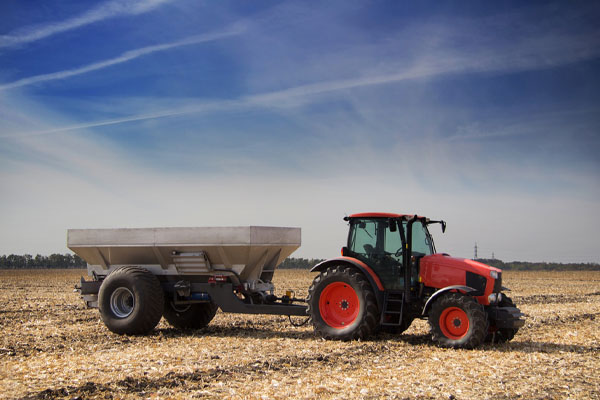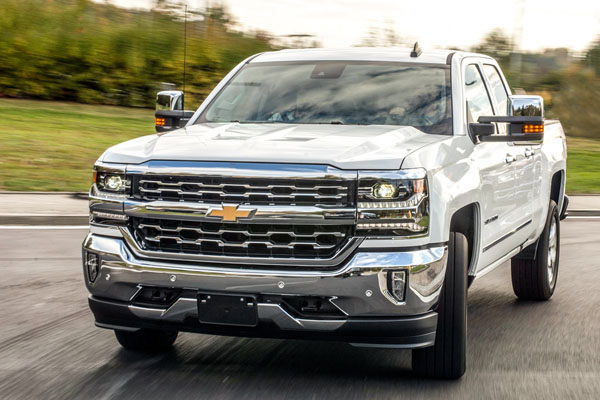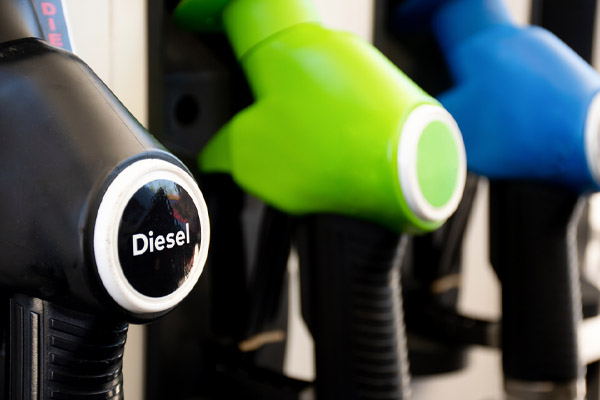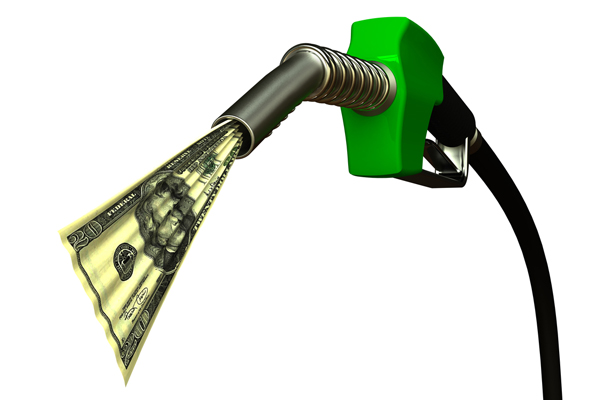On-Road & Off-Road Diesel – What’s The Difference?

Diesel, known for its versatile use, especially in combustion engines, can be sourced from various methods, including petroleum and biomass. With quality and sustainability in mind, standards for diesel are established in many regions. One crucial distinction is between on-road and off-road diesel. In this article, we’ll delve into the contrasts and parallels of these two diesel types, on-road vs off-road diesel.
On-Road Vs. Off-Road Diesel: Unraveling the Distinctions
Contents
Keep reading to learn more about the nuances that set these two fuels apart.
Understanding On-Road Diesel

On-road diesel, as its name suggests, is designed for vehicles traveling on public roadways, primarily for transportation purposes. It’s the clear fuel often found at your local gas stations. Although some refer to it as “green diesel,” this doesn’t allude to its actual color but underscores its renewable and eco-friendly attributes.
The visual clarity of on-road diesel can be a quick gauge of its age and quality. Fresh, good-quality fuel will be bright and clear. In contrast, older on-road diesel may lead to reduced performance and other potential complications. It’s always best to choose providers who consistently supply top-notch diesel to ensure the best results for your vehicle.
Understanding Off-Road Diesel
Off-road diesel is tailored specifically for agricultural and industrial purposes. This fuel is the driving force behind farms, manufacturing plants, and construction sites. Such locations lean heavily on stationary machinery with diesel engines to elevate their operational efficiency. Although vehicles might be on these sites, they are typically restricted from public roadways and remain within the premises.
Additionally, off-road diesel finds its utility in homes, especially as a heating solution during colder months. It’s crucial to note that federal and state regulations govern the use and taxation of this type of fuel.
A standout feature of off-road diesel is its distinct red tint, achieved by incorporating Solvent Red 26 and 164 dyes. Even in minute concentrations, these dyes remain detectable, ensuring that differentiation from on-road diesel is unmistakable. This distinction is paramount, given the different regulations and uses associated with each fuel type.
Spotting the Similarities Between the Two Diesel Types

Despite their distinct uses, on-road and off-road diesel have more in common than you might think. Chemically speaking, they are virtually the same. This means that either variant can fuel any diesel engine, offering comparable performance outcomes. For instance, if a farm or factory exhausts its supply of off-road diesel, it can temporarily use on-road diesel without facing any operational challenges. However, due to cost considerations, they usually revert to off-road diesel at their earliest convenience.
Conversely, while vehicles can technically function using off-road diesel, it’s crucial to tread with caution. Regulatory constraints discourage its use in standard vehicles. Using the red-dyed off-road fuel for on-road applications could land motorists in hot water. Regulatory authorities have established penalties, including hefty fines, for those found deviating from the designated uses of the fuels. It’s always advisable to adhere to the law to sidestep any potential complications.
Dissecting the Differences: Off-Road Vs. On-Road Diesel
Taxation

Perhaps the most prominent distinction between the two fuels hinges on taxation. On-road diesel is levied with a higher tax, a contribution that goes into funding highway and infrastructure upkeep. Given that vehicles using public roads contribute to their deterioration over time, these taxes act as a means for drivers to chip in toward preserving and sustaining these vital pathways.
While the federal tax remains consistent throughout the US, states exercise discretion in imposing supplementary charges. Depending on regional legislation, these duties might be calculated based on the quantity of fuel procured or the overall expenditure. In stark contrast, off-road diesel escapes this taxation due to its specific and non-road-related uses. Consumers need to be aware of these differences, ensuring they make informed choices and know the implications of their fuel purchases.
Color
A distinguishing factor becomes necessary with the chemical makeup of both on-road and off-road diesel being practically identical. This is where color comes into play. A simple glance is all it takes for officials to determine the type of diesel in a tank.
If authorities harbor suspicions about the type of fuel being used, they can pull over motorists for a quick check. They can ascertain the fuel type by extracting a small fuel sample or inspecting the fuel filter’s color. While on-road diesel should appear clear, red diesel in vehicles can lead to substantial fines, potentially soaring to $10,000. It’s imperative to adhere to regulations and steer clear of such inconveniences.
Cost

The allure of using red diesel in everyday vehicles primarily stems from its cost benefits. The added tax burden on on-road diesel translates to a higher price point than its off-road counterpart. This price gap can be as much as 25 cents per gallon. The potential savings from opting for the cheaper fuel might seem attractive for those frequently refueling for extensive journeys. However, the looming threat of substantial fines serves as a strong deterrent. The risks and potential financial repercussions often overshadow the potential savings.
Usage
Legal provisions circumscribe off-road diesel usage. In the realm of construction, this fuel drives a plethora of heavy machinery, ranging from cranes, loaders, and rollers to earth movers, backhoes, and forklifts. Similarly, in agriculture, it powers essential machinery like tractors, harvesters, and irrigation pumps. Such equipment amplifies efficiency, reduces manual labor reliance, and augments farmers’ earnings. Certain jurisdictions permit vehicles to utilize off-road diesel, but this is contingent on them operating solely on private terrains. Contrastingly, on-road diesel predominantly fuels everyday vehicles like cars, SUVs, and smaller trucks plying the public thoroughfares.
Distribution
When it comes to availability, on-road diesel is remarkably accessible. Motorists can effortlessly refuel at conveniently located stations dotting the roadways. Even though it’s pricier, the sheer accessibility and convenience offset the cost. Some states offer a provision for long-haul truck drivers holding legitimate tax certificates to procure tax-exempt on-road diesel at designated pump stations.
Conversely, off-road diesel distribution leans more toward bulk sales. Renowned distributors, such as R.F. Ohl, cater to the voluminous demands of farms and businesses, delivering directly via trucks. Many of these establishments maintain on-site storage tanks to facilitate ease of access. While a handful of remote gas stations might stock off-road diesel, they’re more of an exception than a norm. For consistent and quality supply, aligning with a trusted fuel distribution company is prudent.
In Summary
Diesel’s efficiency and affordability make it an indispensable fuel for many applications. For taxation and regulation purposes, authorities have bifurcated diesel types. On-road diesel, typically more expensive due to tax implications, is designated for vehicles that utilize public infrastructures and is widely available at fuel stations. Conversely, the more economical off-road diesel caters to the farming and construction sectors. Though chemically identical, the inclusion of a red dye in the off-road variant provides a clear demarcation, aiding authorities in overseeing its distribution and pinpointing unauthorized usage. For those needing off-road diesel supplies, contacting a reputable local fuel provider, such as R.F. Ohl, is recommended to arrange timely deliveries.
Call R.F. Ohl For Fast & Affordable Fuel Deliveries

R.F. Ohl is a reliable HVAC company and fuel supplier. We offer the most competitive fuel prices in Northeastern Pennsylvania, and our deliveries are always completed in a timely and efficient manner. We offer many different delivery plans and financing options so that you can customize your fuel deliveries to fit your needs. In addition, we employ only experienced, licensed HVAC technicians to complete any necessary heating tune-ups and repairs so that you can reduce your overall energy costs.
At R.F. Ohl, we provide state-of-the-art HVAC repairs, replacements, tune-ups, and installations. Our professionals have the knowledge and experience to offer you practical and reasonably priced solutions for all your home comfort needs.
Contact R.F. Ohl as soon as possible, and we will be happy to schedule a complimentary, in-home estimate of your HVAC system. Likewise, call us today to find out more about our fuel deliveries.
Click here to contact us today or give us a call at (610) 377-1098 if you have any questions. Click the link to view our service area.
Related Articles: